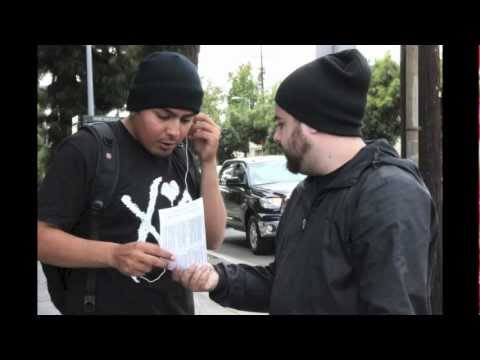The National Day of Protest is an annual event that aims to bring a strong message to the nation and the emphasis of this event is to bring awareness of police brutality and the criminalization of a generation by the police.
The event began in 1996 and every year on Oct. 22, the topic is reintroduced to society in order create solidarity across the nation and to raise a voice against police brutality.
This year, information was passed out to the public through flyers that were available in Spanish.
These flyers included information that related to knowing and understanding the rights a person is entitled to when encountering the police and the brutality that occurs on a national level.
“This protest means honoring the responsibility and the knowledge that I have in terms of understanding the police systems’ implications and responsibilities to the communities of color, especially the undocumented and immigrant communities,” said Bryant Partida, 24, a student in the Chicano/a studies master’s program.
Ten intersections served as epicenters for the release of this information in the San Fernando Valley, including Sherman Way and Reseda Blvd., Van Nuys Blvd. and San Fernando Rd. and De Soto and Parthenia St.
The closest intersection to CSUN’s campus is Nordhoff St. and Reseda Blvd. and that is where two students were volunteering their time to the event.
“With increased criminalization of youth, I feel it’s important for them to know their rights,” said Yanet Lopez-Cardenas, 23, a first year master’s program student in the Chicano/a studies department. “My research focuses on the youth and their education instead of incarceration. I feel like this is a way for me to share my knowledge with them so they can use in their lives.”
Each of the students handed out flyers and engaged in a brief conversation with every person they provided a copy to, informing them of the significance of the day and what they were being given.
“The history of this event has a lot of troubling implications. If we are speaking about the L.A. community in general, it (police brutality) dates back to the L.A. riots and the Rodney King beatings. I think for people of color, it definitely has provided us the opportunity to vocalize to others in our communities who might not be aware of the faults of the police system,” said Partida.
They both emphasized that the purpose of being out at the intersection was to inform people of their rights, how to handle themselves in situations involving the police and a brief insight of the history of the protest.
“Idealistically, you would wish that everyone would read the information, but if you can help someone out in a certain situation, just that one person, I feel like that would be the best outcome,” said Lopez. “This information can touch someone and they can refer someone else to it as well. That will help them know about their rights and to just start that important conversation.”





